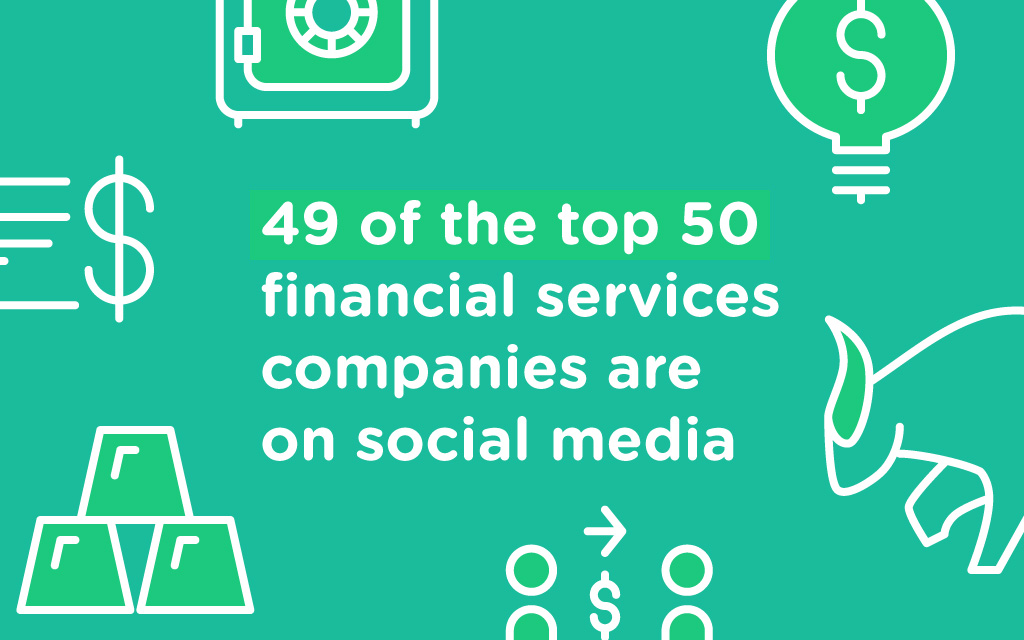The financial services industry’s stringent regulations initially held companies in this sector back from wholeheartedly embracing social media as a marketing channel in the same way that other industries did. But the days of apprehension are shifting into the rearviewmirror as financial services brands are more regularly dipping their toe (or even diving) into the waters of social media.
In our new white paper we evaluate and analyze data from the 50 largest (by revenue) North American financial services companies on social media. Forbes divides the industry into four sectors or categories, and we evaluated these companies based on those designations, which include: Banking (JP Morgan Chase, Wells Fargo, etc.), Consumer Services (American Express, PayPal, etc.), Insurance (Prudential, MetLife, etc.), and Investment (Berkshire Hathaway, Goldman Sachs, etc.). The resulting insights are instructive for financial services brands looking to enhance their digital marketing strategy. In this post, we explore three key insights from our research.
49 of the top 50 financial services companies are on at least one social media platform.
While the financial services industry was amongst the slowest to adopt and embrace social media as a marketing channel, that’s clearly no longer the case, especially amongst the leading businesses in the space. Of course, these industry revenue leaders have the necessary resources to implement a robust social media strategy, but social media can and should be a part of every financial services brand’s marketing strategy.
98% of the top financial services companies are active on LinkedIn compared to just 44% on Instagram.
Our research makes it clear that financial services companies are picking their spots when it comes to social media presence, focusing more strongly on platforms where their target audience is likely to be. There is, however, a clear dichotomy between the consumer-facing (banking and consumer financial services) and the business-to-business (insurance and investment banking) FSI sectors. While 87.5% of consumer services brands and 70% of banking brands are on Instagram, just 33.3% of insurance companies and 17.6% of investment companies are on the platform. LinkedIn, on the other hand, is universally leveraged by FSI companies, with 49 of the 50 companies we evaluated operating LinkedIn company pages.
Just 9 of the top 15 FSI insurance companies are active on YouTube.
This is a stark contrast compared to the FSI industry as a whole, with 82% of the companies we evaluated holding active YouTube channels. All of the consumer services and banking companies we researched are on YouTube and 82.4% of investment banks are on the platform, compared to just 60% of insurance companies. This is a missed opportunity for the investment banking industry, as YouTube is an incredibly valuable platform for search engine optimization purposes. YouTube is in fact the world’s second largest search engine by search volume after Google, both of which are owned by parent company Alphabet. Better yet, YouTube is a great platform for evergreen content as the platform’s shelf life is significantly longer than Facebook, Twitter, and LinkedIn, where your content will get the vast majority of its reach and engagement within just a few days of its publication. While video content on specific trends and developments in the industry are only temporarily relevant, videos profiling company thought leaders and showcasing your company culture can be relevant and continue to earn views for years.
These insights are just the start. Learn more by downloading our free white paper “Making Dollars and Sense of Social Media and the Financial Services Industry” here.
In the meantime, follow us on Instagram to learn more social media stats, marketing influencers, and more.


